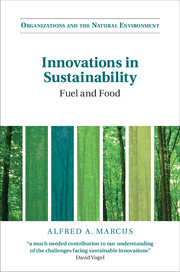Book contents
- Frontmatter
- Dedication
- Contents
- List of figure and tables
- Foreword
- Acknowledgments
- Introduction the path to sustainability
- Part I Funding sustainable startups
- Part II Business models
- Part III The macroenvironment and industry context
- 5 Ticket to ride: Toyota and General Motors
- 6 Blowing in the wind: Vestas and General Electric
- Part IV Finding customers
- Part V Competition between mission and non-mission based businesses
- Concluding observations: the journey continues
- Index
6 - Blowing in the wind: Vestas and General Electric
from Part III - The macroenvironment and industry context
Published online by Cambridge University Press: 05 August 2015
- Frontmatter
- Dedication
- Contents
- List of figure and tables
- Foreword
- Acknowledgments
- Introduction the path to sustainability
- Part I Funding sustainable startups
- Part II Business models
- Part III The macroenvironment and industry context
- 5 Ticket to ride: Toyota and General Motors
- 6 Blowing in the wind: Vestas and General Electric
- Part IV Finding customers
- Part V Competition between mission and non-mission based businesses
- Concluding observations: the journey continues
- Index
Summary
Headquartered in Aarhus, Denamark, Vestas Wind Systems began in 1945 as a steel technology company founded by Peder Hansen. The company moved into household appliances, agricultural equipment, and hydraulic cranes before dedicating itself to wind turbines in 1979. Since 1989, its exclusive focus had been on wind turbines. After it merged with Danish wind turbine manufacturer, NEG Micon, in 2002 it became the world's largest manufacturer, seller, installer, and servicer of wind turbines.
The massive US conglomerate General Electric (GE) had a venerable history in electricity and electric lighting going back to Thomas Edison. Though it participated in many industries including oil, gas, nuclear power, aviation, health, transportation, and the media, under Jack Welch, CEO from 1981 to 2001, it evolved into one of the world's largest global lenders and a powerful financial services firm. Its wind power assets were acquired from Enron in 2002, during that company's bankruptcy proceedings. Without abandoning its ongoing commitments to fossil fuels, GE, under Welch's successor, Jeff Immelt, initiated a program christened “Ecoimagination” – devoted to renewable energy and other clean technologies. By 2009, GE had become the world's second largest wind-power company behind Vestas.
Was wind power, the industry in which the two companies competed, an attractive industry? How could they alter their strategies to more effectively take advantage of the opportunities it offered? In deciding what to do, they had to consider the industry's performance, substitutes to wind, their customers, new entrants to the industry, suppliers, and the competition between them and other industry players. In the short and long term what actions should they take? What strategies should they pursue?
- Type
- Chapter
- Information
- Innovations in SustainabilityFuel and Food, pp. 171 - 200Publisher: Cambridge University PressPrint publication year: 2015



